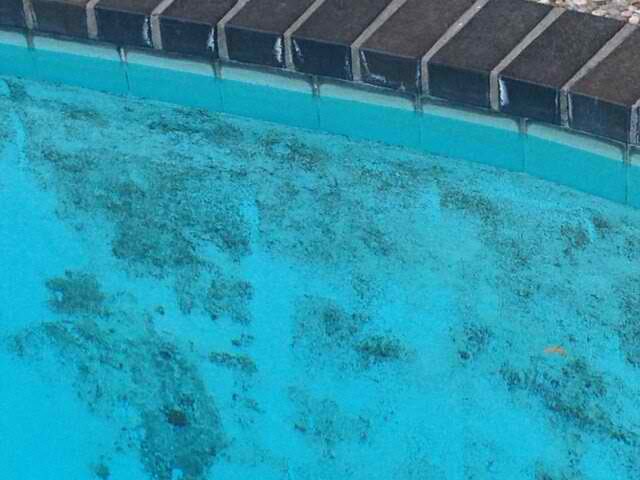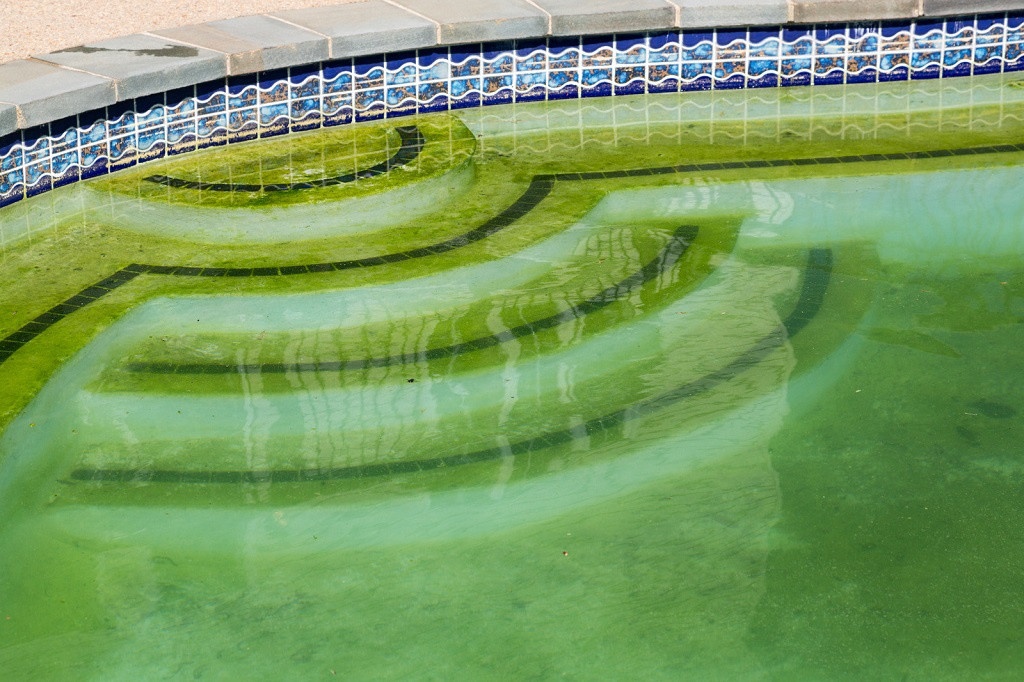Pools are warm, sunny bodies of water - ideal growing conditions for aquatic plant life. Algae growth is one of the most common maintenance issues occupying the time and effort of swimming pool owners. The types of algae found in swimming pools are microscopic plants, often single-celled.
Algae spores enter your pool when they are blown in on the wind, carried on leaves, dropped in on the rain, or carried in on contaminated swimsuits, toys or equipment. Once in the pool, if they are not discouraged from growing by good pool maintenance, they start to multiply until you have an algal outbreak.
The kinds of algae that pool owners deal with are usually grouped into three types.
Green Algae
Green algae is the most common of all the types found in pools. It comes in all shades of green, from yellow-green, to dark green, to blue-green. It is often found floating in the water and turning it green; it can also cling to walls in patches. To help prevent this type of algae, be sure your pool chemistry is healthy and regularly use an algaecide. This algae grows very easily, and sudden blooms are often noticed after a rainstorm. The rain unbalances the water, carries in spores, and adds nitrogen, which fertilizes them. To help prevent this type of algae, be sure your pool chemistry is healthy and regularly use an algaecide.
Black Algae

Black algae is a type of blue-green algae that is so dark it appears black. It grows on surfaces and in crevices. It grows most readily in pools that have rough surfaces and finishes, like concrete or plaster, as rough surfaces are easiest for it to cling to. It usually starts in an area of the pool that doesn't have good circulation, like a corner. It also often grows in the shadier parts of the pool. It is resistant to normal levels of chlorine, and has a protective coating, or "slime layer" so it can be a little more work to get rid of than the floating green algae. You need to brush it firmly to get rid of the protective coating before treatments will be effective. Treatments include making sure the pool chemistry is correct, shocking the pool, and treating with an algaecide.
Mustard or Yellow Algae

This variety of algae is chlorine resistant and looks yellowish or brown. It usually first grows on the floor of your pool, then spreads up the walls. It can also be free-floating. Due to its yellowish or brown appearance, it is often mistaken for dirt or sand on the bottom. It is easier to brush off of surfaces than black algae. It grows slower than other types, which can make it harder to kill. Treat the same as black algae - brushing, shock, and high-quality algaecide.
What To Do
Because the kinds of algae found in pools are usually single-celled organisms, there needs to be millions of these plants in your pool before they are visible. You can have a significant amount of algae in your pool without noticing it. The best way to deal with an algae outbreak is to prevent it in the first place by keeping your pool clean, keeping your pool's chemistry healthy and balanced, and regularly treating the water using a high-quality algaecide. It takes less algaecide to prevent algae than it does to get rid of it once it has spread.
If you develop an algae outbreak, first be sure your water is balanced. Test all of the chemical values and bring them into ideal range. A poor pH, for instance, will make chlorine from shocking less effective. High nitrogen levels actually provide fertilizer for the algae. Learn about what pool chemicals will be the most helpful for you in bringing your water back to balance.
Shock the pool; your pool provider will be able to guide you through this process. Shock is basically a carefully-calibrated higher than normal amount of chlorine or bromine added to kill any living organisms in the pool.
Add algicide as directed. An excellent algicide is Applied Biochemists Swimtrine Plus 406104A. Applied Biochemists Swimtrine Plus is one of the most effective algicides available. It is a highly concentrated copper based treatment for all kinds of algae outbreaks.
Algae is most vulnerable when it is growing, so treating on a warm, sunny day enhances the effectiveness of treatments.
Remember to brush down the algae thoroughly; do this every day, as long as there are patches, to disrupt the protective coating it grows, scrub off dead cells, and expose algae to the treatments.
If you have a large algae outbreak, you will need to vacuum the algae out of your pool as it perishes.

